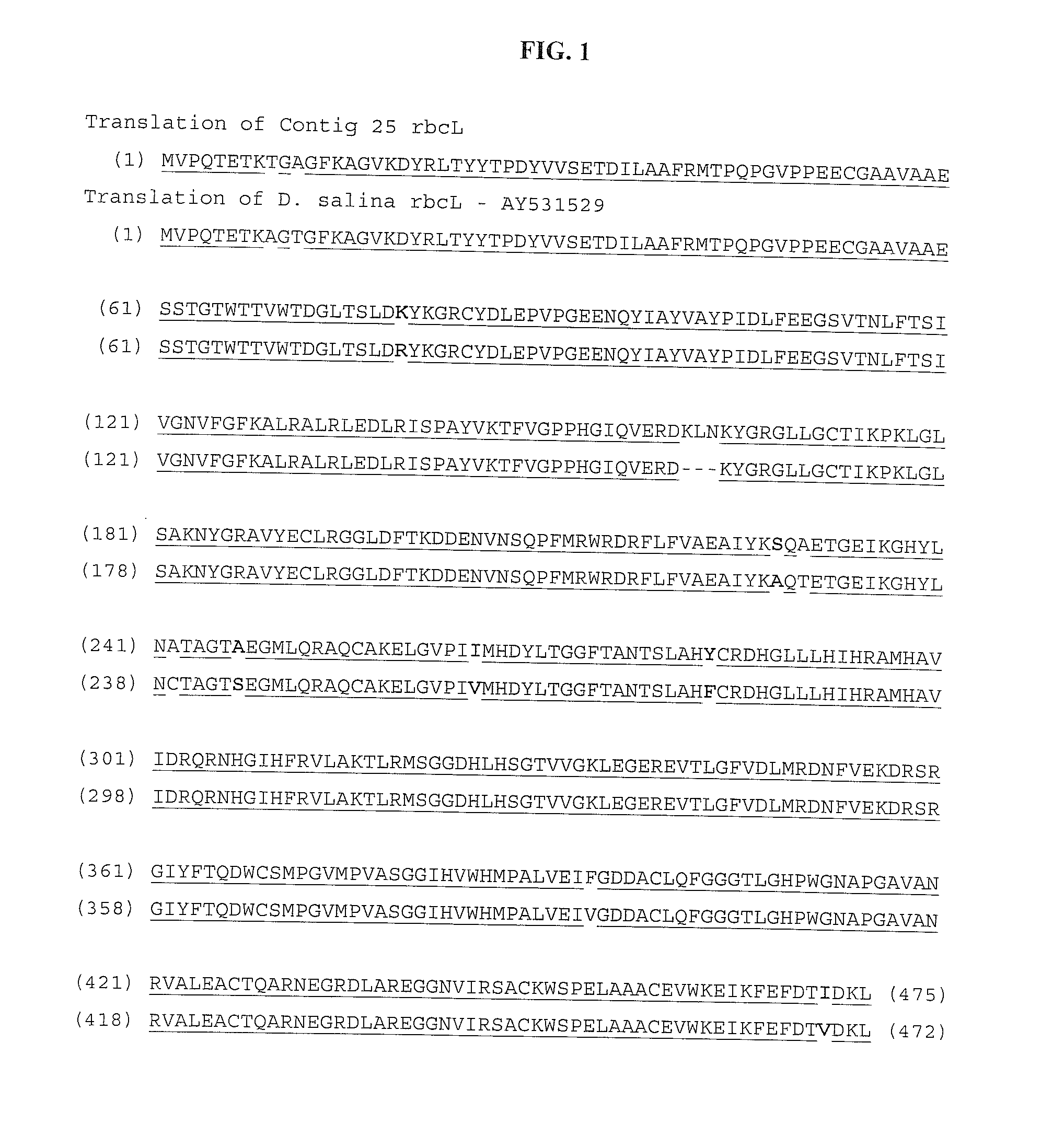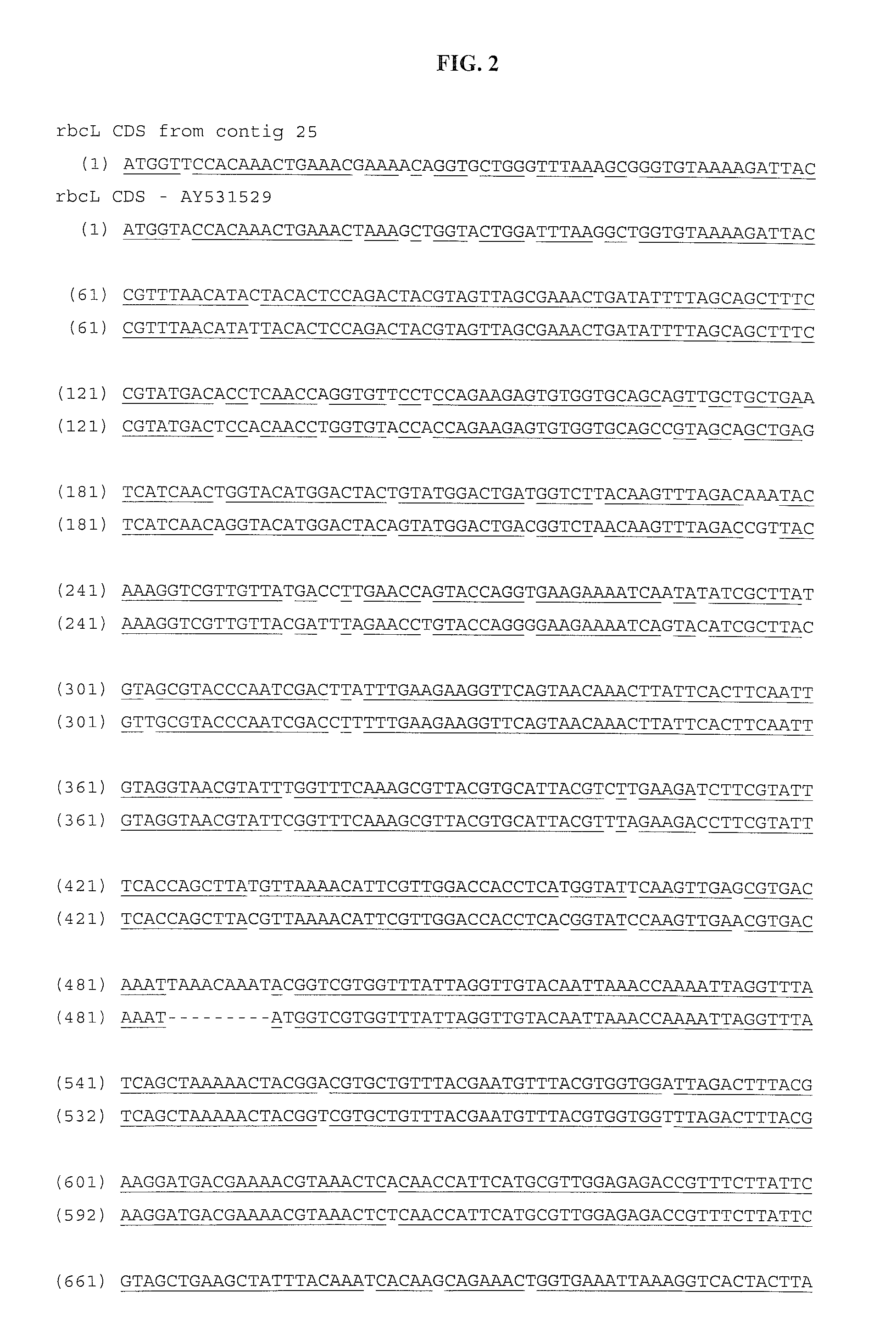Preservation and composition of bioprocess algae for production of lipids, seedstock, and feed
a technology of bioprocess algae and composition, applied in the field of bioprocess algae production of lipids and feed, can solve the problems of low productivity of desired algae components, high cost associated with cultivation process, and inability to effectively cultivate methods, etc., to achieve rapid replacement, reduce risk, and reliable route
- Summary
- Abstract
- Description
- Claims
- Application Information
AI Technical Summary
Benefits of technology
Problems solved by technology
Method used
Image
Examples
example 1
Algae Culture Techniques
[0114]This Example illustrates various algae culture techniques for producing concentrated preserved algae seedstock.
[0115]In an embodiment, one or more algal lines identified to be of interest for scale-up and field testing are transferred from culture flasks into carboys, and then seeded into outdoor photobioreactors. Ponds or raceways can also be used. Permitting might be required for practicing field production of algae. Lab scale-up can be practiced, for example, by transferring algal lines from culture plates to flasks in volume of 25 mL, 125 mL, and 500 mL, then transferred into carboys in volume of 2.5 L, 12.5 L, and 62.5 L (using multiple carboys) prior to seeding of bioreactors such as the Varicon Aquaflow BioFence System (Worcestershire, Great Britain) in volume of 200 L, 400 L, 600 L, and 2400 L. Alternatively, other bioreactors can be employed, such as systems from IGV / B, Braun Biotech, Inc. (Allentown Pa.), or other vertical tubular reactors of ...
example 2
Extraction of Lipids from Algae Biomass
[0119]This Example illustrates methods for total lipid extraction from Dunaliella.
[0120]D. salina HT04 is grown in inorganic rich growth medium containing 1 M NaCl at room temperature (20-25° C.). 1 L of culture in 500 mL volumes in separate 1 L flasks is grown under illumination with white fluorescent light (80 umol / m2sec) with a 12-hour light: 12-hour dark photoperiod. Algal cells are collected in the early and late logarithmic phases of growth, or in stationary phase, by filtration in Buchner funnels.
[0121]Lugol's staining, as is known in the art, is used for cell counts. To briefly illustrate, 200 uL of a well-mixed culture is transfered into a 1.5 mL microcentrifuge tube. 100u1 of the mixture is then placed into a new tube. 1 ul of Lugol's iodine is subsequently added to the mixture and mixed thoroughly. Lastly, 10 ul sample of culture is loaded into a hemacytometer for counting. Cells can be counted in the absence of staining using a Bec...
example 3
Determination of Algae Lipid Content
[0139]This Example illustrates methods for demining algae lipid content.
[0140]Composition of fatty acid methyl-esters in D. salina HT04 is assessed using protocols as is known in the art. In one exemplification, cell pellets are stored under liquid nitrogen prior to analysis. Lipids are extracted using a Dionex Accelerated Solvent Extractor (ASE; Dionex, Salt Lake City) system. The lipid fraction is evaporated and the residue is heated at 90° C. for 2 hours with 1 mL of 5% (w / w) HCl-methanol to obtain fatty acid methyl esters in the presence of C19:0 as an internal standard. The methanol solution is extracted twice with 2 mL n-hexane. Gas chromatography is performed with a HP 6890 GC / MS equipped with a DB5 fused-silica capillary column (0.32 um internal diameter×60 m, J&W Co.). The following oven temperature program provides a baseline separation of a diverse suite of fatty acid methyl esters: 50° C. (1 min hold); 50-180° C. (20° C. / min); 180-280°...
PUM
| Property | Measurement | Unit |
|---|---|---|
| temperature | aaaaa | aaaaa |
| pH | aaaaa | aaaaa |
| temperature | aaaaa | aaaaa |
Abstract
Description
Claims
Application Information
 Login to View More
Login to View More - R&D
- Intellectual Property
- Life Sciences
- Materials
- Tech Scout
- Unparalleled Data Quality
- Higher Quality Content
- 60% Fewer Hallucinations
Browse by: Latest US Patents, China's latest patents, Technical Efficacy Thesaurus, Application Domain, Technology Topic, Popular Technical Reports.
© 2025 PatSnap. All rights reserved.Legal|Privacy policy|Modern Slavery Act Transparency Statement|Sitemap|About US| Contact US: help@patsnap.com



